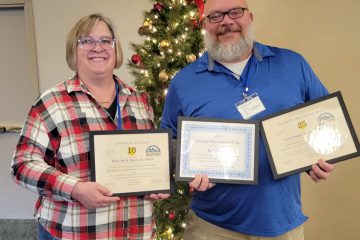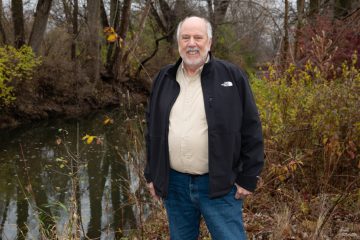Dear SWCD colleagues, stakeholders, and supporters,
Illinois’ 103rd General Assembly has finalized the FY25 budget. While many are celebrating, we on the frontlines of soil and water conservation are yet again disillusioned by a frontal attack that has landed at our doorsteps. As a recap, the governor proposed returning the state’s investment into Soil and Water Conservation Districts to pre-2000 funding levels ($4.5 million) for his FY25 budget, the director of the Illinois Department of Agriculture declared in the IDOA appropriations committee that this was the funding level proposed and that increased funding would have to be a legislative member-led initiative. Thus, AISWCD—on behalf of the state’s SWCDs—in partnership with many supporters (Illinois Soybean Association, Illinois Environmental Council, IEC, Illinois Stewardship Alliance, and others) banded together to engage our elected officials in the statehouse on several occasions. Many legislators (in both parties) declared their support and discontent with the proposed funding levels. Sadly, our supporters in the Senate were not able to adjust the funding levels as requested in the final $53.1 billion budget. And, our advocates in the House furthered the Senate by approving the FY25 budget late on Tuesday. It has now advanced to the governor’s office to be signed into law with a roughly 48% decrease in SWCD operational funding.
As Maya Angelou reminds us: “I can be changed by what happens to me. But I refuse to be reduced by it.”
While the outcome we had advocated for did not come to fruition, we will find a path forward to ensure that the state’s essential Soil and Water Conservation Districts remain on the frontlines in protecting the state’s most vital natural resources…soil and water.
As Michelle Obama declared, “When they go low, we must go high.”
At this time, we must take the high road and find a path forward, and not dwell in the actions to cut SWCD funding and the attack on intergenerational equity and sustainable investing. Rather we must find a path forward to ensure that we: 1) diversify our treasury to become less dependent on volatile funding; 2) maintain service to our stakeholders to ensure the acceleration of locally-led efforts to conserve, protect, and restore the land and water across the state; and 3) engage those that value the frontline, boots-on-the-ground conservation agriculture essential to protect the stability and sustainability of Illinois.
At the federal level, the Biden administration has showcased a deep understanding and appreciation for conservation by investing an unprecedented amount into agricultural conservation across the nation. As we each are aware, these conservation commitments often fall short, and implementation—the real crux of field level conservation—lags far behind the promises in light of reduced technical assistance (operational) funding for frontline Soil and Water Conservation District staff. Nevertheless, now is the time we shall rise to the occasion and strive to elevate the same level of federal support through understanding at the state level. While the state’s return to pre-2000 funding for SWCD has taken place with the FY25 budget, we cannot allow these actions to decline our individual and collective ability to put in motion our shared mantra of healthy soil and clean water.
It is once again on us as the state’s Soil and Water Conservation District directors, staff, and stakeholders to ensure that we elevate the message across the state. Ensure that Illinois puts in motion the essential efforts to meet objectives of the Nutrient Loss Reduction Strategy (NLRS), achieve grassroots conservation essential to protect the states vital natural resources, and raise the bar of climate resiliency across the state.
Andrew Sloan Draper, President of the University of Illinois (1894-1904) declared that “The wealth of Illinois is in her soil and her strength lies in its intellectual development.”
It is once again on the state’s Soil and Water Conservation Districts to be the intellectual development and find a path forward to defend the state’s soil wealth, while reminding our elected officials and our stakeholders that “the nation that destroys its soil, destroys itself.” Eighty-eight years ago, when making this declaration, President Franklin D. Roosevelt had the foresight to invest into the future of the nation by investing into conservation, showcasing a deep understanding of the intergenerational equity needed to ensure a future for those to follow. James Tobin, an economist noted: “The trustees of endowed institutions are the guardians of the future against the claims of the present. Their task in managing the endowment is to preserve equity among generations.” This must be our routine message and sage guidance as we navigate the road ahead in our journey.
In closing, I remind you that now is the time for decisive, collective action. It’s time to demonstrate that the Illinois SWCD system will stay the course and respond to the immediate conservation crisis while shaping a recovery which prioritizes social and environmental outcomes through intergenerational investments of your time and talents, as we seek the treasures of those that truly value our individual and collective service today for tomorrow. The actions we collectively take over the coming weeks, months, and perhaps even years will lay the foundations for a more stakeholder-driven and sustainable environment — one that aligns conservation of our natural resources with the constituents and commitments of our state’s General Assembly and highest leadership.
Onwards and upwards,
Michael Woods
Executive Director
Association of Illinois Soil & Water Conservation Districts


